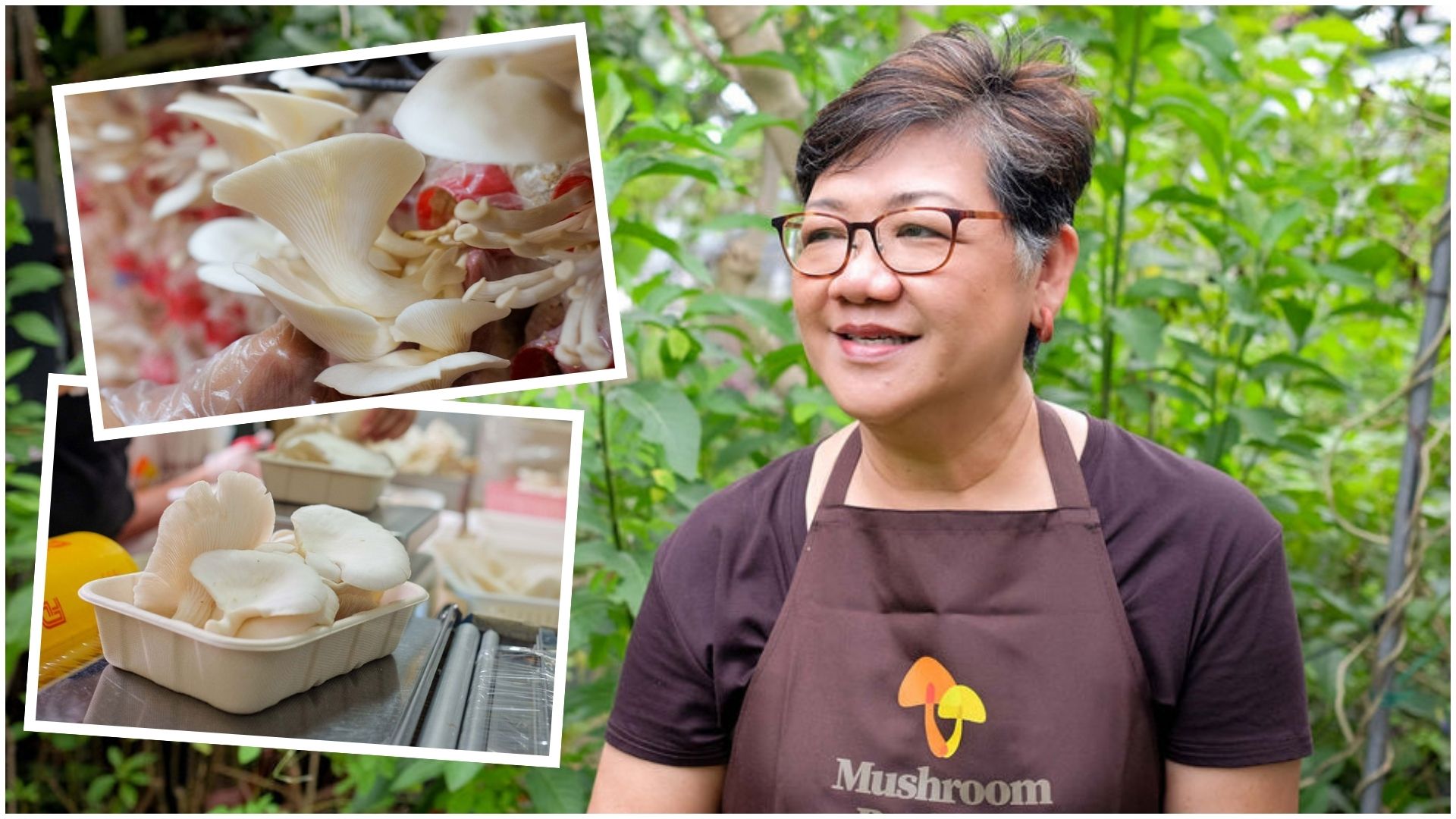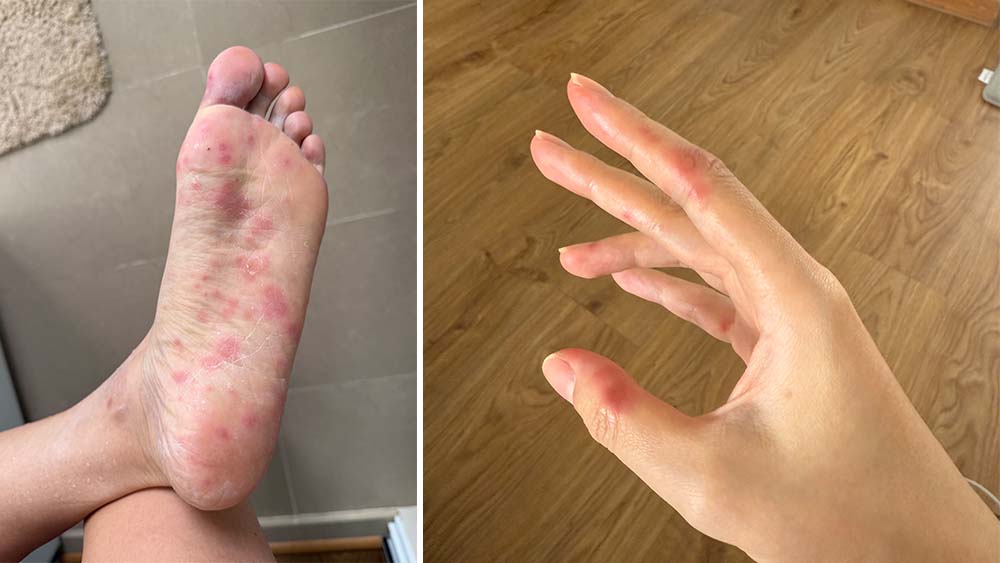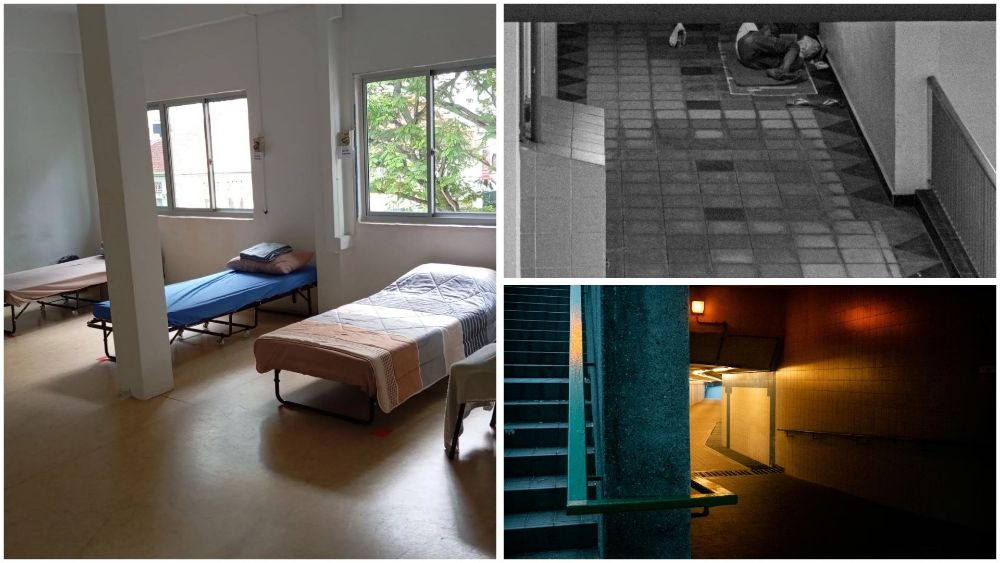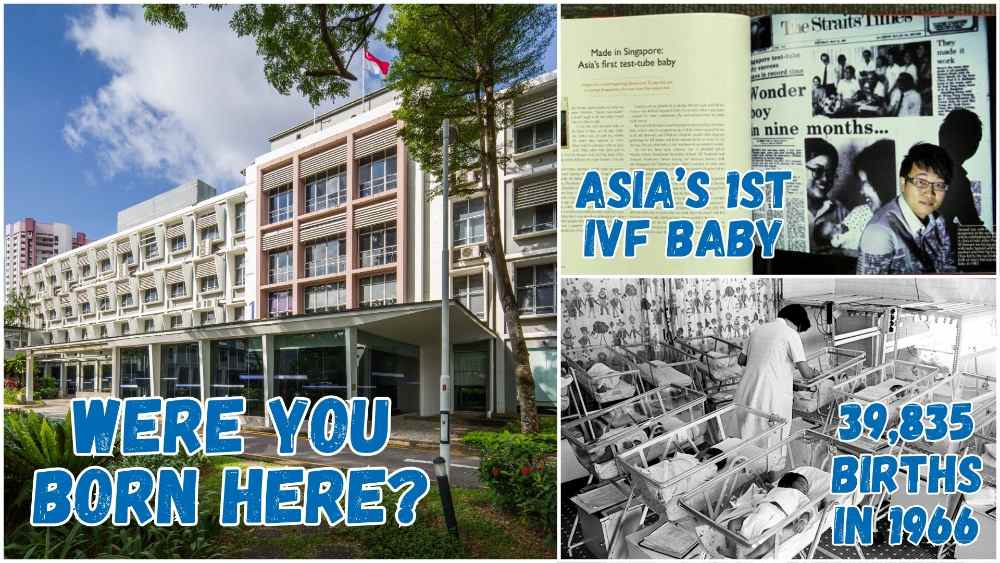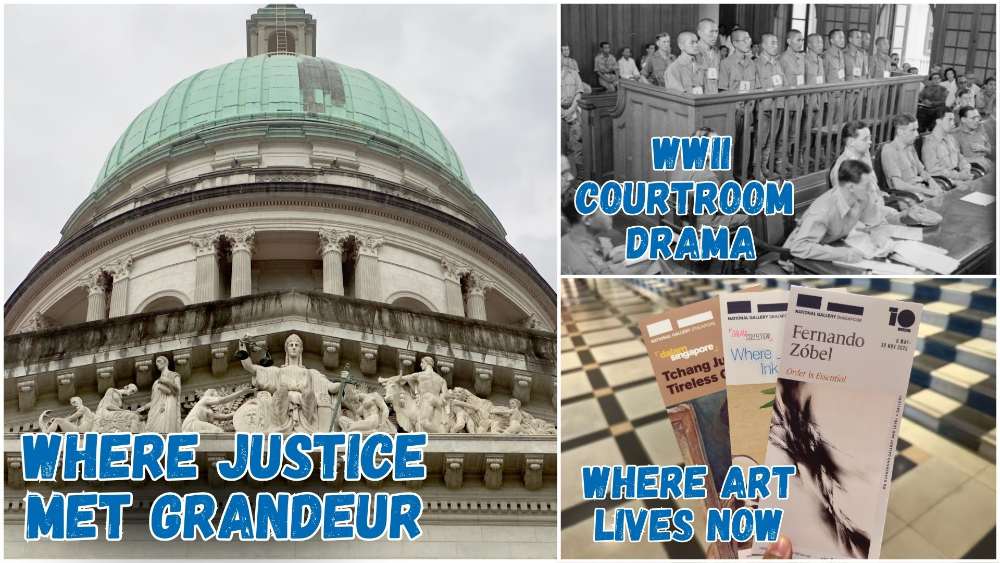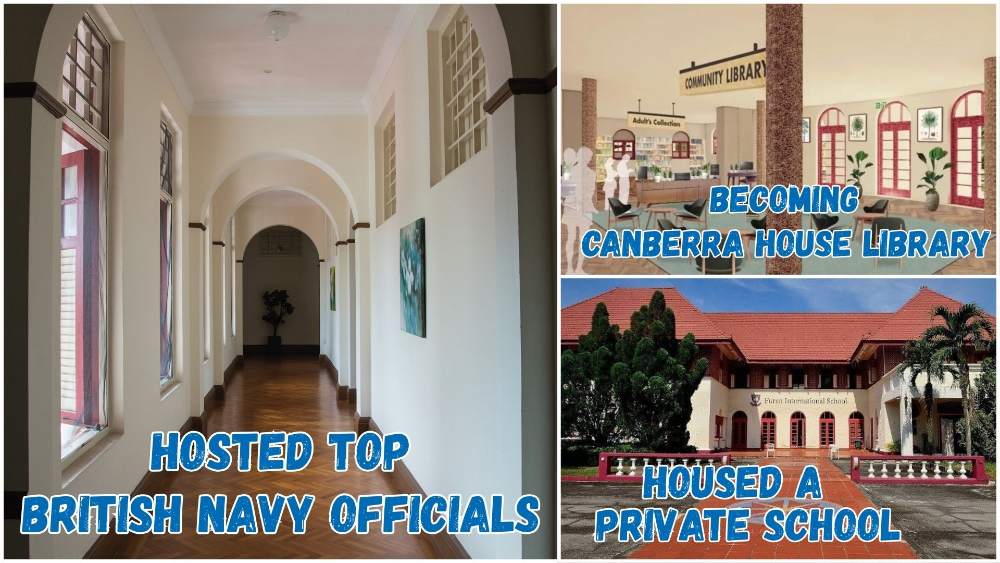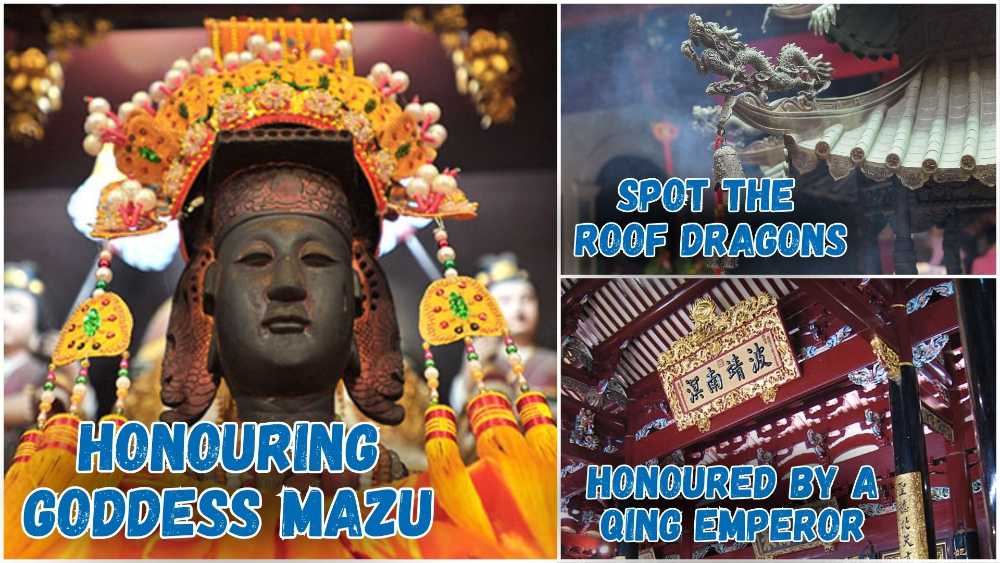A Baby Every 13 Minutes. Asia's First Test-Tube Baby. Now, It's A National Monument
What is a National Monument? Who gazettes them? How many national monuments are there in Singapore? To date, the Preservation of Sites and Monuments, a division of National Heritage Board, has identified and gazetted 76 buildings, structures and sites of national significance as an integral part of Singapore’s built heritage.
And we're here to tell you all about them - one National Monument at a time!
You've probably passed by or stepped into more than a few of them without realising they were National Monuments: Al-Abrar Mosque, Asian Civilisations Museum, the Civilian War Memorial, Saint Andrew's Cathedral, the Esplanade Park Memorials, Fort Siloso on Sentosa - no need to plan an itinerary for friends visiting from overseas; just show them this article ✌️
In this edition, we highlight a hospital that holds the record for delivering 39,835 babies in a single year, earning it a Guinness World Record and the nickname “the world’s busiest maternity hospital, the Former Kandang Kerbau Hospital (KKH).
📍 Location
Blocks 1, 2, and 3 of the Former KKH were collectively gazetted as the 76th National Monument. The MRT stations nearest to it are Farrer Park and Little India.
📅 Significant dates
Dates built:
- 1858: Singapore's fifth general hospital opens at Kandang Kerbau, an area once known for its bullock sheds
- 1933: Block 2, the oldest surviving block, is completed to replace earlier single-storey wards
- 1940: Block 3 is built to expand maternity capacity before the war years
- 1953-1955: Block 1 is constructed under Dr Benjamin H. Sheares and Chief Government Architect K. A. Bundle, forming the hospital’s main Hampshire Road façade with modern air-conditioned wards and operating theatres
Milestones:
- 1905: Renamed the Pauper Hospital for Women and Children, providing free care to underprivileged mothers
- 1 Oct 1924: Officially reopened as Kandang Kerbau Hospital, Singapore’s first free maternity hospital specialising in obstetrics and gynaecology
- 1942-1945: Under Japanese Occupation, renamed Chuo Byoin (“Central Hospital”) and used for civilian care
- 1952: Singapore’s first School of Midwifery opened at KKH, training a generation of local midwives
- 1966: 39,835 babies were delivered in this "birth-quake year", earning KKH a Guinness World Record as the world’s busiest maternity hospital
- 1997: Relocated to Bukit Timah Road as KK Women’s and Children’s Hospital, expanding facilities and services
- 2004: Former KKH site became the headquarters of the Land Transport Authority (LTA)
Date gazetted:
- 1 Oct 2025
📜 History
The hospital traces its origins to 1858, when it opened as Singapore’s fifth general hospital in an area then known as Kandang Kerbau (Malay for “buffalo enclosure”), a nod to the bullock sheds that once occupied the site. Initially treating venereal and other infectious diseases, the hospital began admitting women with gynaecological conditions in 1868.
A major milestone came on 1 Oct 1924, when it was officially designated a free maternity hospital, marking the start of its specialisation in maternal healthcare.
As the hospital’s importance grew, so too did its facilities. In the post-war years, KKH cemented its reputation as Singapore’s leading institution for obstetrics, gynaecology and maternity care. Through improved medical practices and the commitment of its staff, the hospital achieved major progress in reducing both maternal and infant mortality rates.
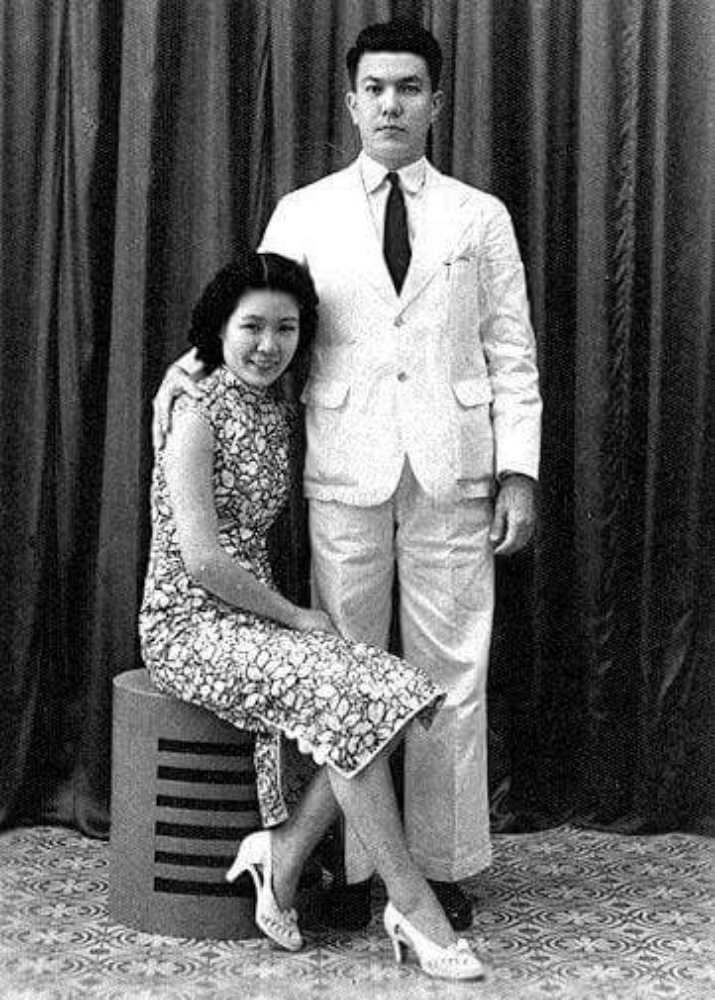
Pioneers such as Dr Benjamin Sheares (standing) played a significant role in advancing obstetric and gynaecological medicine. | IMAGE: FACEBOOK/@SINGAPORE MATTERS
The hospital also became the stage for significant medical breakthroughs. Local pioneers such as Dr Benjamin Henry Sheares, who later served as Singapore’s second President from 1971 to 1981, were instrumental in advancing obstetric and gynaecological medicine.
In 1951, he became the first Singapore-born Professor of Obstetrics and Gynaecology, and introduced several landmark procedures, including Singapore’s first lower-segment caesarean section. His innovative surgical method for creating a neovagina in women born without one would later gain international recognition as the “Sheares Procedure”.
Another trailblazer, Professor S. S. Ratnam, oversaw Singapore’s first sex reassignment surgery and delivered Asia’s first in-vitro fertilisation (IVF) and gamete intrafallopian transfer (GIFT) babies at KKH.
A key milestone in the hospital’s legacy was the establishment of Singapore’s first School of Midwifery (1952–1978), which trained a generation of post-war local midwives. Their skill and dedication in delivery and nursing care helped elevate maternal health standards across the nation.
These doctors and midwives were at the heart of Singapore’s post-war baby boom, from the late 1940s through the 1960s, dramatically improving survival rates for both mothers and infants. Their efforts culminated in the hospital’s most remarkable year (1966) when KKH delivered a record-breaking 39,835 babies – basically, one baby born every 13 minutes that year!
That whopping figure accounted for about 85 per cent of all births in Singapore that year, and earned KKH recognition in the Guinness Book of Records as the world’s busiest maternity hospital.
Between 1924 and 1997, more than 1.2 million babies were born at the former KKH. The hospital relocated that year to 100 Bukit Timah Road, where it continues its mission as KK Women’s and Children’s Hospital, offering expanded facilities and services.
Today, the original Hampshire Road buildings serve as the headquarters of the Land Transport Authority (LTA).
🏆 Milestones
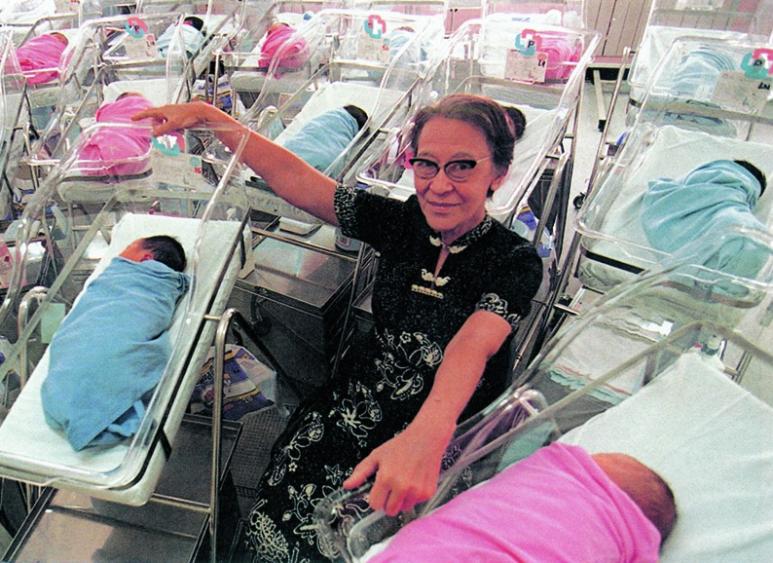
The late Dr Yvonne Marjorie Salmon, who served for 44 years at the Former KKH, was involved in Singapore's first surgery to separate a pair of Siamese twins. | IMAGE: FACEBOOK/@KK WOMEN'S AND CHILDREN'S HOSPITAL
1961: Singapore’s first pair of conjoined twins delivered
In 1961, KKH achieved a historic medical milestone with the successful delivery of Singapore’s first pair of conjoined (Siamese) twins, Karen and Kate. The complex birth underscored the hospital’s growing reputation for advanced obstetric and surgical expertise. This remarkable case reflected the skill and courage of KKH’s medical professionals, who continued to push boundaries in maternal and neonatal care during an era of rapid medical progress.
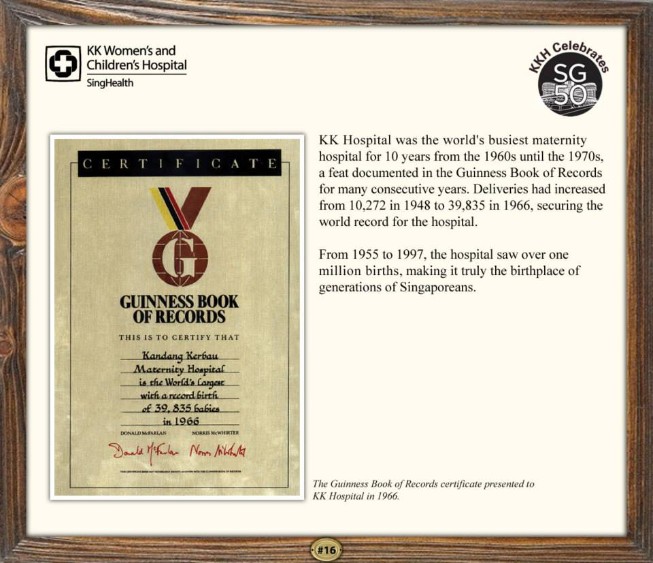
IMAGE: FACEBOOK/@KK WOMEN'S AND CHILDREN'S HOSPITAL
1966: The "birth-quake" year
By 1966, KKH had become the world’s busiest maternity hospital, earning a place in the Guinness Book of Records after delivering an astonishing 39,835 babies in a single year, roughly one birth every 13 minutes. The phenomenon, dubbed the “birth-quake”, symbolised Singapore’s post-war baby boom and KKH’s critical role in safely bringing new generations into the world. At its peak, the hospital accounted for nearly 85 per cent of all births in Singapore, a testament to the trust families placed in its care.
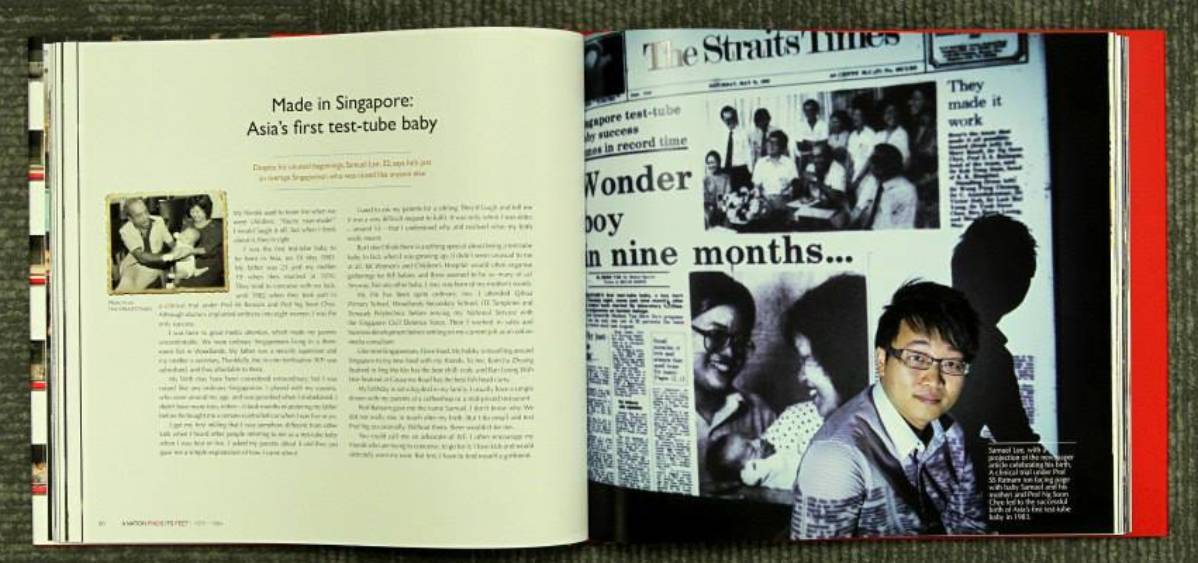 Asia's first test-tube baby, Samuel Lee, was born on 18 May 1983 at the Former KKH. | FACEBOOK/@LEE HSIEN LOONG
Asia's first test-tube baby, Samuel Lee, was born on 18 May 1983 at the Former KKH. | FACEBOOK/@LEE HSIEN LOONG
1983: Asia's first IVF baby born at the Former KKH
In 1983, KKH once again made history when Asia’s first in-vitro fertilisation (IVF) baby was born within its walls. Led by Professor S. S. Ratnam and his pioneering medical team, the breakthrough marked a new era in reproductive medicine and offered renewed hope to couples struggling with infertility. The milestone cemented KKH’s position as a leader in women’s health and medical innovation, transforming what was once seen as impossible into reality.
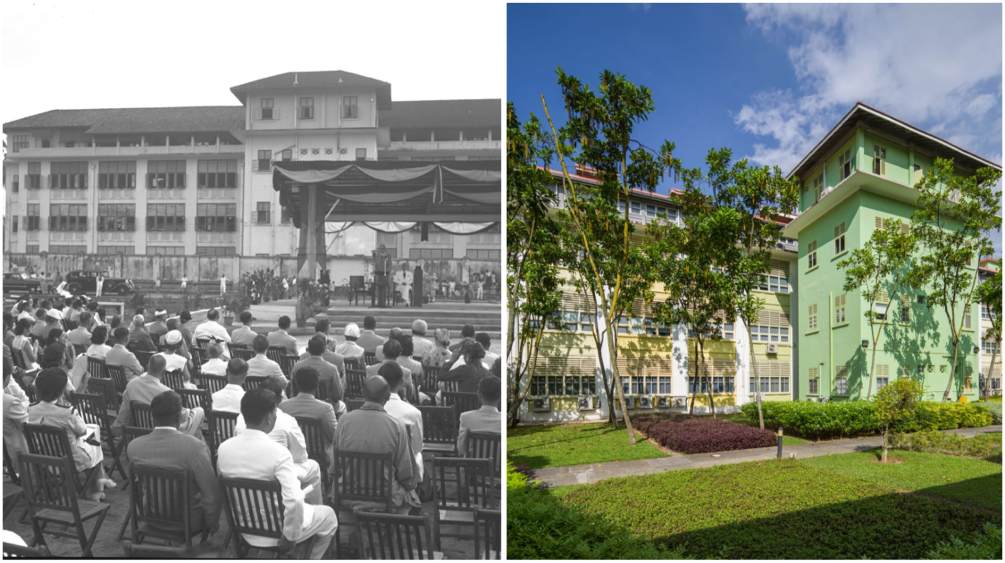 Block 2 then (left) and now at the Former KKH. | IMAGES: (LEFT) COURTESY OF NATIONAL ARCHIVES OF SINGAPORE AND FINBARR FALLON
Block 2 then (left) and now at the Former KKH. | IMAGES: (LEFT) COURTESY OF NATIONAL ARCHIVES OF SINGAPORE AND FINBARR FALLON
📐 Design and architecture
The hospital’s physical expansion mirrored its growing importance and the evolving demands of medical care. To cope with the rising birth rate and the need for improved healthcare, KKH continuously upgraded its facilities.
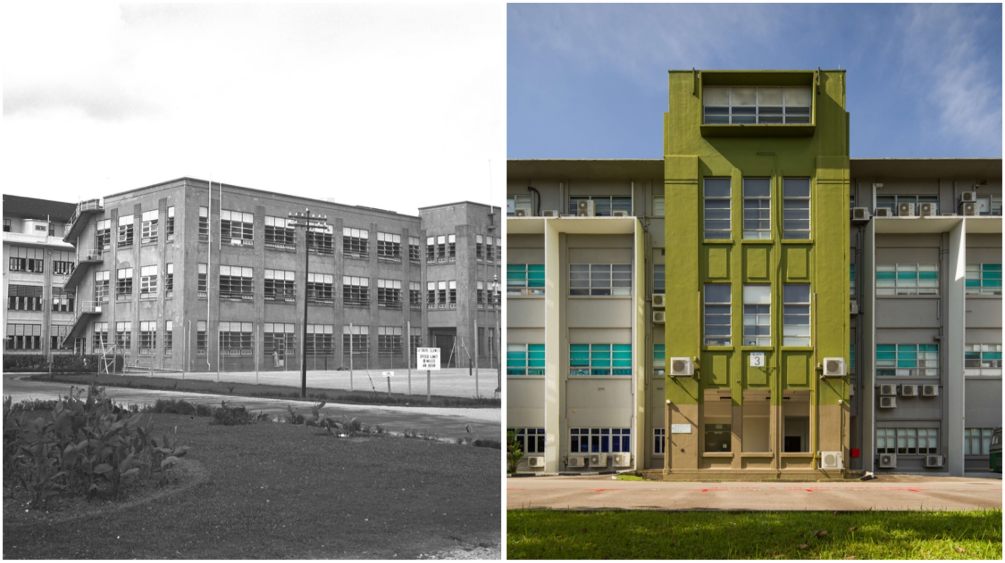 Block 3 then (left) and now at the Former KKH. | IMAGES: (LEFT) COURTESY OF NATIONAL ARCHIVES OF SINGAPORE AND FINBARR FALLON
Block 3 then (left) and now at the Former KKH. | IMAGES: (LEFT) COURTESY OF NATIONAL ARCHIVES OF SINGAPORE AND FINBARR FALLON
Between the 1930s and 1950s, three key blocks – now known as Blocks 1, 2 and 3 – were built to serve Singapore’s expanding population and to raise medical standards. The earlier single-storey wards were demolished in the early 1930s to make way for new three-storey buildings. The first of these, now called Block 2, opened in 1933 and remains the oldest surviving block on the site. A second three-storey building, today known as Block 3, followed in 1940.
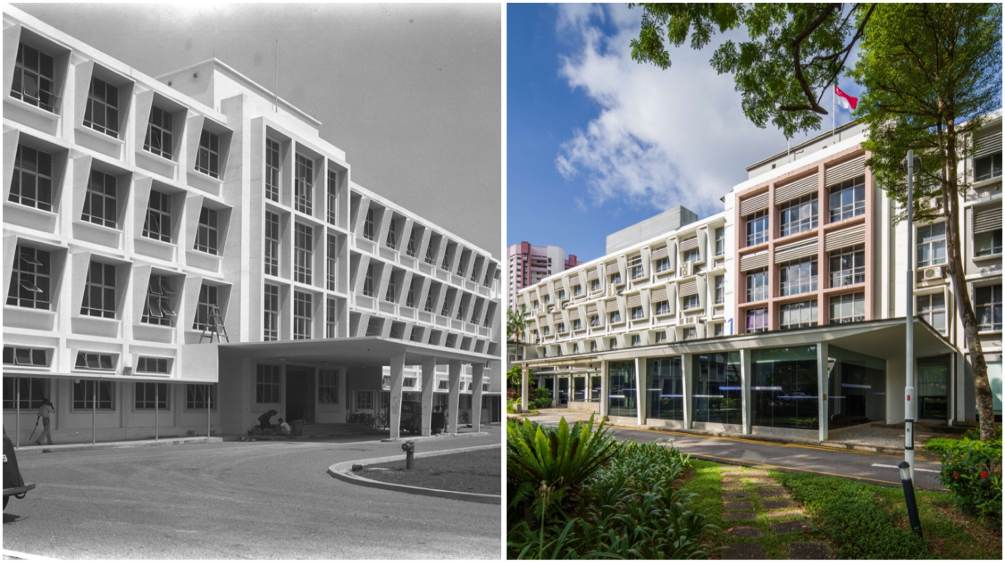 Block 1 then (left) and now at the Former KKH. | IMAGES: (LEFT) COURTESY OF NATIONAL ARCHIVES OF SINGAPORE AND FINBARR FALLON
Block 1 then (left) and now at the Former KKH. | IMAGES: (LEFT) COURTESY OF NATIONAL ARCHIVES OF SINGAPORE AND FINBARR FALLON
A major addition came between 1953 and 1955 with the construction of a new block, now designated Block 1, which became the hospital’s main facade along Hampshire Road. Equipped with air-conditioned wards, a students’ hostel and an operating theatre, the building was a collaborative design between Dr Benjamin H. Sheares and Chief Government Architect K. A. Bundle.
The hospital’s architecture evolved in tandem with advancements in medical knowledge and hospital design. Early wards followed the traditional “Nightingale” layout, with beds arranged in two long rows to encourage airflow. By the 1950s, this approach was replaced by smaller, self-contained wards with regulated ventilation, a more effective configuration for preventing the spread of infection.
The three blocks are notable for their modernist style and inventive use of materials. Block 2, built in the 1930s, featured smaller wooden-louvred windows typical of that period, while Block 1’s 1950s design reflected architectural progress with its wider openings and reinforced concrete hoods. These features were carefully conceived to protect patients from Singapore’s tropical heat and heavy rains while optimising natural light and cross-ventilation.
Block 3, with its heat-resistant flat roof, was forward-looking in its design and deliberately constructed to allow future extensions.
Together, the buildings demonstrate a pragmatic yet thoughtful response to the local climate, providing patients with comfort and light in an era of rapidly modernising healthcare.
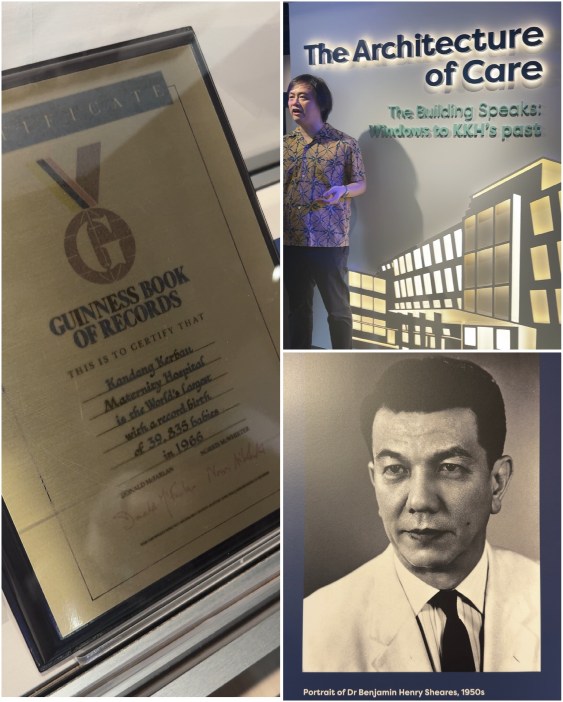
Snippets from The Architecture of Care exhibition at Block 1. | IMAGES: NG KAI
Discover the legacy of care at the Former KKH
At the commemorative exhibition The Architecture of Care, visitors can explore the former KKH grounds and uncover the hospital’s remarkable history through a display of stories, photographs and artefacts. Among the highlights is the original foundation stone, shown to the public for the first time, which was laid in 1953 to mark the construction of a new wing that later became Block 1.
Another notable exhibit features lecture notes belonging to Dr Yvonne Marjorie Salmon, taken during lessons conducted by Dr Benjamin Sheares when he was Professor of Obstetrics and Gynaecology. Dr Salmon would go on to become the first woman to head that department at the Former KKH.
The exhibition (which runs till 31 Dec 2025) is open to the public from Mondays to Fridays, 9.30am to 5pm, with visitor registration required at the LTA security posts.
For the latest updates on Wonderwall.sg, be sure to follow us on TikTok, Telegram, Instagram, and Facebook. If you have a story idea for us, email us at [email protected].
